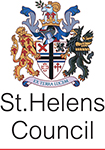
A series of archaeological digs involving volunteers from the community has taken place at Stanley Bank. A small part of the slitting mill site was excavated in 1982-3 as part of a Manpower Services Commission funded Community Programme, but unfortunately only a partial record of the excavation survives. Most of the detailed archaeological work at the site took place between 2006 and 2008 led by the National Museums Liverpool Field Archaeology Unit. Trial trenches were dug in the summer months of 2006 and 2007 with a larger survey in August 2008. All the archaeological, historical and other sources of information have been collated as a Watching Brief to give an overview of the site
In addition to archaeological surveys the site has also been investigated using geophysical techniques. In 2006 gradiometer and resistivity surveys were carried out by Stratascan Ltd and both found anomalies that may show the outline of the buildings that used to be present. However, the findings of these two techniques did not correspond well with each other and seemed to be complicated by the materials that were deposited on the site e.g., iron-rich deposits and a thick layer of clay. Ground penetrating radar (GPR) was also tested, but did not manage to clearly identify the buried remains of the buildings
The site has also been scanned using laser based equipment so that any remains above the ground surface were accurately mapped. This survey was then linked to computer modelling and has allowed a 3D “virtual mill” to be created illustrating what we think the site may have looked like in the past. This technique has been used at other archaeological and heritage sites, but here its use is unique as there is so little surface evidence to work from.
Other sources of information include historical maps of the area which show the site and how the area around it has changed. We also have a newspaper advert dated 1784 (the year in which the mill was put up for sale) which tells us that there were a number of houses and warehousing located at Stanley Bank at this time. A number of artefacts were also found during the archaeological surveys of the site, but have yet to be fully investigated. These were mainly 19th and 20th century pottery and clay tobacco pipe fragments.
